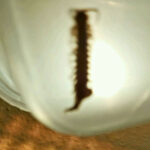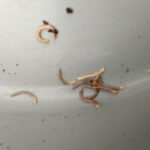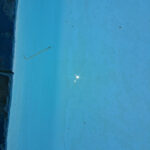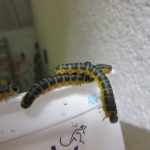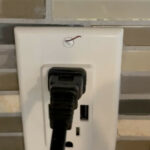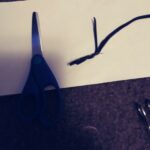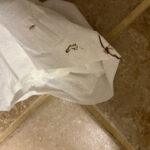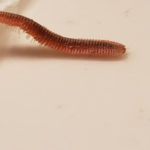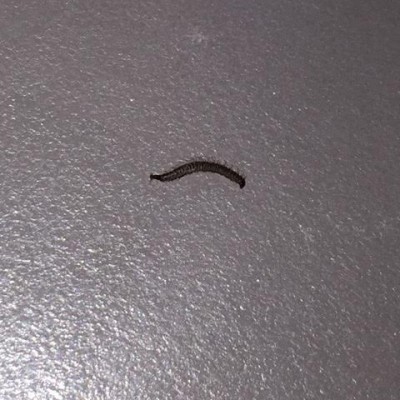
“I found two of these worms on a sweater I was lint rolling”, writes Allison in her submission regarding the tiny, brown worm-like critter pictured below. “The sweater had been out in my garage in my laundry area before I had a chance to wash it (it’s cashmere so I washed it by hand in cold water). After washing and air drying (which took a few days because it’s been gloomy here), I lint rolled and found two of these worms. I did notice a few holes in the sweater so I thought they were some type of moth larva but from what I could find moth larvae are more rigid and these are moving like worms. I am horrified. What are they?” To start with, we want to thank Allison for the great photos, the best of which we included below. Clear photos like these are always a huge help. We also want to sympathize with Allison: finding unwanted guests in your home, let alone on your clothing, can definitely be horrifying.
Not to worry though, the creature Allison found is a millipede. Millipedes are completely harmless. They are neither moth larvae nor worms: they are arthropods. An arthropod is an animal that has a segmented exoskeleton with legs joined at each segment. Millipedes have a lot of those segments, and consequently have a lot of legs. It is their multitude of legs that they are known for and named after, ‘millipede’ translating roughly (from Latin) to ‘thousand feet’. They are not to be confused with their cousin the centipede (which means ‘hundred feet’), which can be somewhat harmful to humans and pets (the common centipede cannot do more than sting you with their pincer-like appendages). Millipedes will, at most, secrete a smelly fluid when scared that could cause an allergic reaction, but nothing serious.
Millipedes do not eat clothing, so it is not the millipede that has made these holes in Allison’s sweater. They are also far more rigid than moth caterpillars are, so we are not entirely sure what Allison means by “moving like worms”. Worms do not have legs, while millipedes have dozens, and so they move very differently; while a worm, let’s say an earthworm, will wriggle its way forward by straining and decompressing their muscles, millipedes will simply walk. In fact, when people find millipedes they will often describe them as seeming to glide across surfaces. This is because all of their feet are on the underside of their body, and as they are very small, they are often not visible. This is also the main distinguishing factor between millipedes and centipedes, as centipedes have long legs which grow from the sides of their bodies and are very much visible. Since this millipede was on a sweater and not on even ground, perhaps it did start to wriggle around and try to get off the sweater, which reminded Allison of worm-like movements.
So, the big question here is why the millipede was on the sweater, and how it got there. Well, millipedes love garages, and this sweater was retrieved from one. When it starts to get hotter outside, millipedes will migrate to people’s homes, particularly to those rooms which tend to be cool and damp (such as garages and basements), as this describes their ideal habitat. It’s hard to keep millipedes out of garages, since garage doors often do a somewhat poor job of sealing off the outdoors. The best way to control millipede populations is to make these rooms as unsuitable as possible for them, which means keeping them warm and dry (which one can do using portable heaters and dehumidifiers). Of course, it is often not financially realistic to buy such machines and keep them running all the time, so other than that, the best forms of prevention are to keep organic debris away from the sides of one’s home (piles of twigs, leaves, rocks, and the like), and to shovel out the millipedes as they come in. Keeping one’s gutters clean can also help reduce millipede populations. To keep them out of her laundry, it might be best to keep the laundry that’s not in the washing machine in sealable hampers (like those with a drawstring), and to keep any pieces of clothing off the floor.
In conclusion, Allison found millipedes on her sweater. These critters are harmless, but can nonetheless prove to be quite the nuisance in the summertime as they invade garages and basements in droves. We hope this helps, and we wish Allison the very best of luck with keeping her home millipede-free!
All About Worms is always free, always reader-supported. Your tips via CashApp, Venmo, or Paypal are appreciated! Receipts will come from ISIPP Publishing.
You might also find these guys interesting!




